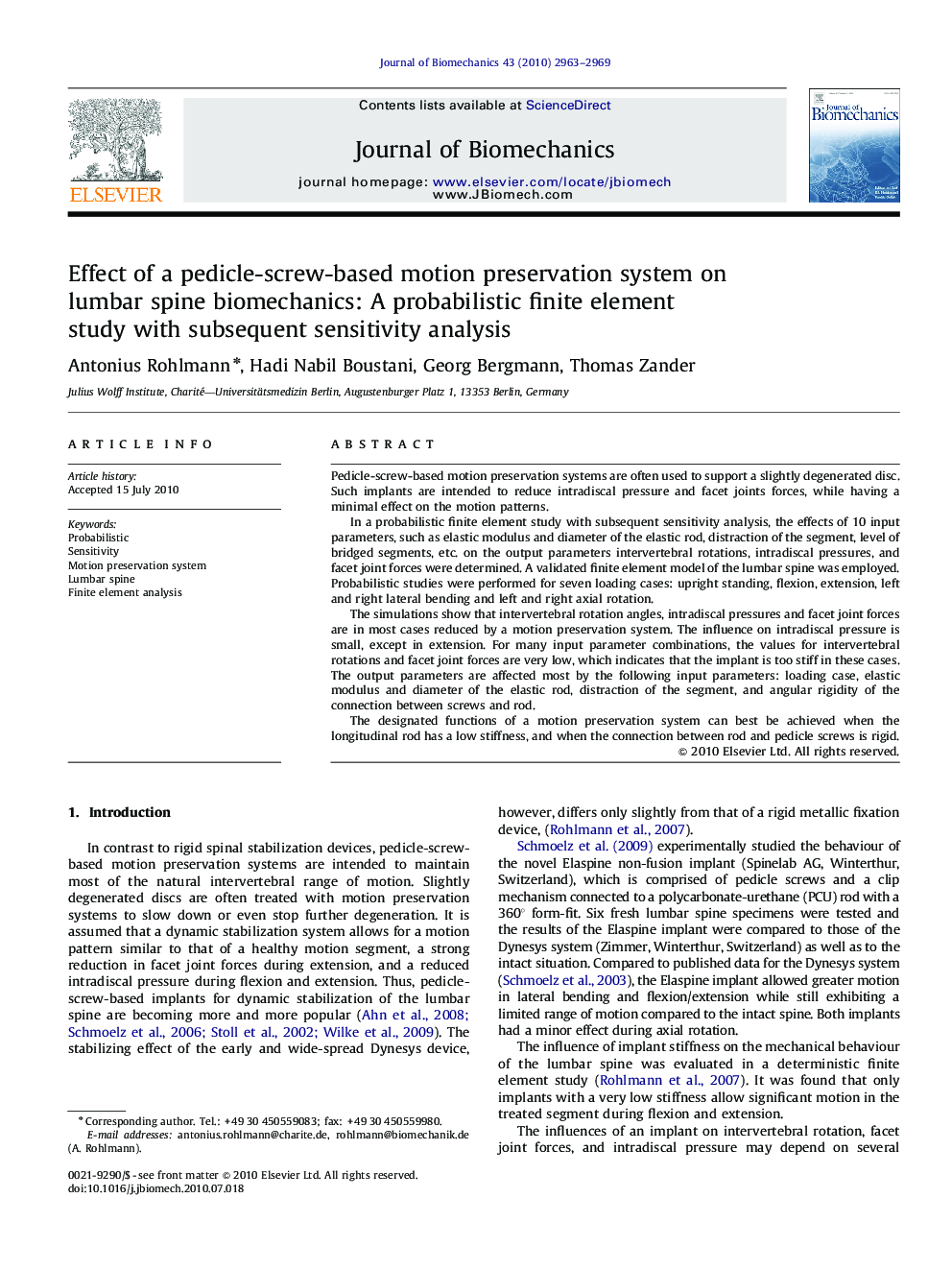| Article ID | Journal | Published Year | Pages | File Type |
|---|---|---|---|---|
| 872469 | Journal of Biomechanics | 2010 | 7 Pages |
Pedicle-screw-based motion preservation systems are often used to support a slightly degenerated disc. Such implants are intended to reduce intradiscal pressure and facet joints forces, while having a minimal effect on the motion patterns.In a probabilistic finite element study with subsequent sensitivity analysis, the effects of 10 input parameters, such as elastic modulus and diameter of the elastic rod, distraction of the segment, level of bridged segments, etc. on the output parameters intervertebral rotations, intradiscal pressures, and facet joint forces were determined. A validated finite element model of the lumbar spine was employed. Probabilistic studies were performed for seven loading cases: upright standing, flexion, extension, left and right lateral bending and left and right axial rotation.The simulations show that intervertebral rotation angles, intradiscal pressures and facet joint forces are in most cases reduced by a motion preservation system. The influence on intradiscal pressure is small, except in extension. For many input parameter combinations, the values for intervertebral rotations and facet joint forces are very low, which indicates that the implant is too stiff in these cases. The output parameters are affected most by the following input parameters: loading case, elastic modulus and diameter of the elastic rod, distraction of the segment, and angular rigidity of the connection between screws and rod.The designated functions of a motion preservation system can best be achieved when the longitudinal rod has a low stiffness, and when the connection between rod and pedicle screws is rigid.
